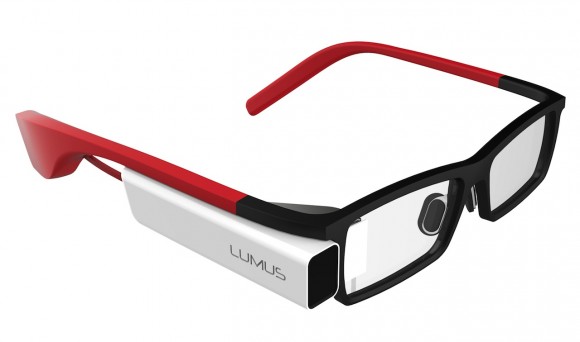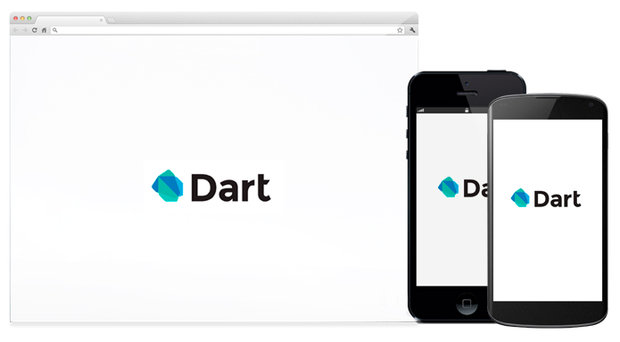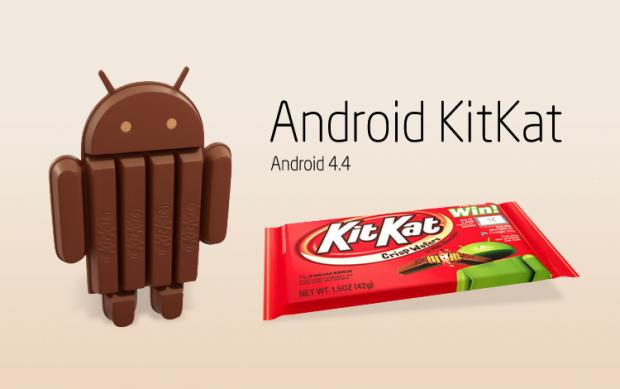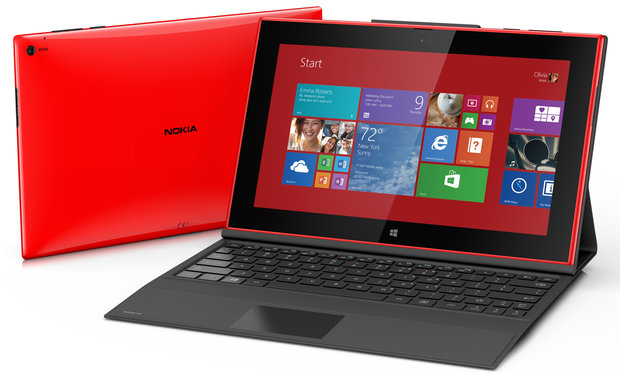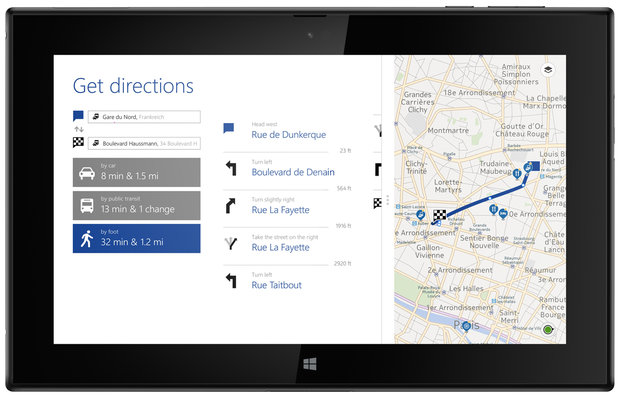Great post comparing hybrid and native apps, including the insight from developers
Inside Satya Nadella’s CEO Comp Package From Microsoft
Nadella has become the third CEO of Microsoft. Here’s the TechCrunch view on this event.
Smart Glass by Lumus
Company Lumus, which produces high-end devices for the military, is going to release its own “smart” glasses. Unlike Google Glass, which is a small screen is located above the right eye , they do allow access to augmented reality.
The entire surface of eyeglass lens – is semi-transparent display with 640 x 480 resolution. Developers for this gadget ( which, incidentally, is based on Android) can cast the picture of the their program directly to the real world , rather than to simply display a notice on the tiny screen is hanging on.
The company, however, is not going to enter the consumer electronics market . She is going to license its technology to the translucent image projection lenses for other companies , which, in turn, will just make the finished product.
In the existing prototype image is projected on the right lens. The control unit is located to the right includes 5 megapikspelnuyu camera, processor , battery, and various sensors . Alas, while the prototype can not boast a long battery life – he is able to function fully only 1-2 hours.
Google created a replacement for JavaScript
Google has released the first stable version of the programming language Dart, whicih has been designed to replace JavaScript, offering higher performance and efficiency of programming. The new language is ready for developing real-world applications, sais project leader Lars Bak. At the moment Dart is not supported by modern browsers, but developers can convert Dart code in a commonly understood JavaScript.
Dart SDK 1.0 package includes all the necessary tools for creating a simple script, as well as full-fledged web applications.
The package includes undemanding to resources and at the same time powerful development environment called Dart Editor, which has the following possibilities – code completion, refactoring, the transition to the definitions and system debugging tips and warnings. And that’s not all.
A custom version of the browser Chromium virtual machine Dart VM, which is also included in the package, along with other tools, allows you to run native code. In addition, code debugging is performed directly in the Dart Editor, that is the programmer can instantly see the result of their work.
To run the code written in Dartin modern browsers you’ll need a Dart compiler provided in JavaScript – dart2js. Compiled applets and applications can be run in Internet Explorer 9 and 10, the latest version of Firefox, the latest version of Chrome, and Safari 6.
None of the modern browsers does not yet support native code Dart. In the future, Google plans to add this feature to its own Chrome browser.
According to Bak, they were able to approximate the performance of applications compiled with dart2js, performance native code JavaScript, and some tests even showed Dart’s advantage (eg. DeltaBlue). In general, high-speed operation is one of the priorities of the creators of the language, which has been from the beginning and continues to be the main goal. Thus, developers have managed to achieve the performance of the virtual machine Dart VM, at 42-130 % higher than the speed of the JavaScript engine V8.
To date, the Dart community has developed more than 500 packages, including popular among web developers AngularDart and polymer.dart. In addition to these libraries, developers can use JavaScript.
A number of companies has already started building applications with Dart, including Blossom, Montage, Soundtrap and Mandrill. It is also used by some Google units. Adobe, drone.io and JetBrains has also declared language support in their products as well.
Dart language was introduced in October, 2011. Since then, Google has sought for the new project participants and has been building the community of enthusiasts. But it also should be noticed that not everyone agreed to support Dart. For example, Microsoft announced that they would continue to participate in the development of JavaScript.
Pebble has become even smarter
Pebble company introduced an update to its smartwatches, significantly expanding their capabilities. At the same time, they’ve released SDK update that actually puts the clock in a line with popular gadgets for sports and fitness – such as the Jawbone Up and Fuelband Nike.
Such changes in the positioning of their devices come from other manufacturers of smart watches – particularly Samsung and Sony. However Pebble relies on collective development and doesn’t try to impose some features they’d like to have. Recently released new software tools that third-party developers can use to build their applications for smartwatches.
Although Pebble haven’t managed to be the first to present their smartwatch, they became the most popular vendor at the market. This is because the company has always focused on the real possibilities of application are actively working on a publicly accessible application development for their hours and immediately set them on a relatively low price level of $150.

Image by Pebble Technologies
In comparison, Samsung Galaxy Gear clock costs $ 450, and now about a third of disappointed customers returned Samsung Gear back to the shops as they their expectations are not met. The functionality of cheaper Pebble smartwatches is much higher.
New features include an updated SDK which purpose is data caching. Any application will now be able to save their data in the memory clock and transfer them to your phone later. This is important for swimming and other sports, when the smartphone is away from the clock and the connection to it via Bluetooth temporarily interrupted.
The focus of the SDK is on the cross -platform. New applications for the Pebble can equally work with the iPhone and smartphones with OS Android. Pebble developers bear in mind the work on the client end as well. Earlier in iOS notifications sent at Pebble was limited to phone calls , e-mail and SMS . After updating any application can display their notifications on the screen of the smartwatch.
New Android 4.4 KitKat
On October 31, Google announced the release of the long-awaited new operating system Android 4.4, which has a code name KitKat.
One of the main innovations of 4.4 has become a finalized phone application. First, it now displays not only the data from the address book, but also the contacts of companies located in geographic proximity. Information is taken from Google Maps. SMS and MMS are opened in Hangouts.
Second, the company has transformed OS interface. If a user is listening to music or transmits video from the device to the TV, then player control panel displays on the lock screen. Applications open in full screen, and to see a string of notifications and navigation buttons, you must swipe your finger across the display.
Google has mentioned that Android 4.4 will run on machines with pretty weak hardware. The system requires only 512 MB of RAM for successful work.
The company, among other things, has updated some of the default applications and added some new ones: in particular, a Quickoffice office package, a pedometer and Emoji keyboard. Devices with IR LED can now be used as a remote control, without having to install additional software.
The first smartphone based on Android 4.4 is LG Nexus 5 which has been presented ogether with the new OS. In the coming weeks, owners of Nexus 4, Nexus 7 and Nexus 10 as well as users of smartphones Samsung Galaxy S4 Google Edition and HTC One Google Edition will be able to upgrade to 4.4. Other users will have to wait a little bit for update.
Android is the world’s most popular mobile operating system. By 2013, the world has been activated more than one billion devices on the platform. The previous version of Android, 4.3, was released in July 2013.
One of the Android’s “weaknesses” is fragmentation – the most common version of the system is now 4.1.x, dating from the year 2012. It manages work 36.5% of all devices. In second place in popularity (28.5%) is Android 2.3.x, introduced in 2010.
Nokia presented its first tablet and biggest smartphone
Nokia’s first tablet with Windows RT 8.1 operating systemis equipped with a quad-core Snapdragon processor 800. The tablet was presented at the forum Nokia World by Stephen Elop, head of devices and services, Nokia.
The basis of the hardware platform Nokia Lumia 2520 is a quad-core Qualcomm Snapdragon 800 processor with a clock speed of 2.2 GHz. Also, the model has 2 GB of RAM and internal storage with a capacity of 32 GB. As have already been mentioned, the tablet runs under Windows RT operating system.
Nokia Lumia 2520 has a body made of polycarbonate, and it is available in four color options: red, white, black and blue. It has 10.1 inches screen with the resolution of Full HD and obscured glass Gorilla Glass 2. The model supports LTE and Wi-Fi networks.
The main tablet camera has a resolution of 6.7 megapixels and a Zeiss lens with an aperture of f/1.9. Resolution of the front camera is two megapixels. As with other new models of tablet was branded photo apps Nokia Camera and Storyteller, and also it allows you to record and edit video on the Video Director.
Nokia Lumia 2520 battery has capacity of 8000 mAh, the tablet can operate continuously during video playback and 10 hours. Fast charge mode recovers over 80% of the battery in one hour.
Together with the tablet Nokia has introduced an additional keyboard-cover Nokia Power Keyboard, which has integrated battery, which allows to extend the battery life up to five hours. The keyboard also has two USB-ports and a trackpad with gesture recognition function.
Nokia Lumia 2520 will appear in the United States, Finland and the UK before the end of this year, the price of the tablet will be $499. The cost of the keyboard, which will be sold separately, is $ 149.
HTC presented its new smartphone-giant HTC One Max
HTC has unveiled the first device in its line of the so-called “fablets” – HTC One max, – which has been expected to enter the market for several months.
HTC One max design inherited the one of HTC One smartphone, the current HTC flagship device, which many observers consider to be one of the best smartphones on Android. In addition, HTC One is one of the few smartphones made of aluminum. HTC One max is also aluminum body, as its predecessor.
HTC press service said that HTC One max “offers an award-winning design, functionality and performance of HTC One smartphone to the fans of bigger bigger devices.”
HTC One max is equipped with 5.9-inch display with a resolution of 1920×1080 pixels (373 ppi), 4-core Qualcomm Snapdragon processor 600 with a frequency of 1.7 GHz, 2 GB of RAM and 16 or 32GB of flash memory, depending on the variant delivery.
The new smartphone is equipped with two cameras – a main and front. The fromt camera has resolution of 2.1 megapixel. The main camera is made with the use HTC UltraPixel, as well as the one of HTC One. It contains a back-illuminated sensor with a resolution of 4 megapixels, increasing to 2 micron pixel size. The matrix size is 1/3 inch. During the processing of the image corresponds to a separate processor HTC ImageChip 2.
HTC One max runs an operating system Android 4.3, which is installed on top of a graphical shell HTC Sense 5.5. The device has a number of proprietary technologies and features that HTC equips its other devices, including HTC BlinkFeed, HTC Zoe and stereo speakers with the technology HTC BoomSound.
In addition, the new model is equipped with a fingerprint scanner . It is at the back, under the camera. The scanner can be used to unlock the device instead of a password, and also serve to launch a maximum of three applications, each of which the user can assign the appropriate finger.
By selling HTC One max in the global market maker is planning to launch before the end of October. The cost of the device is not reported.
Technology that’ll change mobile games
Smart Terrain is a revolutionary technology that integrates real-world objects into three-dimensional gaming environment. The platform is designed to demonstrate the capabilities of mobile augmented reality games in a whole new way. Now users will be able to create in Vuforia-based applications their own virtual game environment to interact with the physical world, combining it with virtual elements. For example, the game characters will be able to move on real surfaces: jump over objects or even fall off the table. The platform also allows you to scan the shape of characters and make them to be game objects. Smart Terrain Platform was presented with the sensor PrimeSense Capri 3D, which endows digital devices the ability to watch the scene in three dimensions.
Vuforia Smart Terrain helps bring to the gaming sphere cinematic special effects – says Jay Wright, vice president of product management of Qualcomm Technologies, Inc. – This technology blurs the boundaries between the game and the physical world.
We are incredibly pleased to work with Qualcomm to create a new generation of games with augmented reality, – said Inan Beracha , CEO of PrimeSense. – Platform Vuforia combined with depth sensor specifically designed for mobile devices, will give you incredible feel of the game .
Smart Terrain supporting depth sensor PrimeSense Capri will be available for application developers in the spring of 2014 and will be included in the new version of the SDK Vuforia. The latest news and additional information about the platform Vuforia – www.vuforia.com.
Vuforia is an industry-leading software platform in augmented reality sector, based on which has already created more than 5,500 applications for devices running on Android and iOS.
Here’s a short video for this news:
WP to be Android’s neighbor?
According to Bloomberg, Microsoft has offered HTC to install their Windows Mobile operating system on HTC devices, which currently run on Android. But at the same time, a new line of devices is not planned. What Microsoft offers is that a user will be able to choose one of the operating systems, either ANdroid or WP, on booting the device.

HTC device with WP
The companies have discussed the possibility of lowering the cost of system installation. Even the variant of free WP installation has been considered to make the offer more attractive to the device manufacturers. The negotiations have just started, so it’s too early to talk about something for sure.
It’s still unclear whether there has been any certain reaction from HTC on this point. Whether the company will agree on dual booting is also unknown.
It’s worth noticing, that HTC already produces smartphones that run on WP, but the number of such devices is rather small. On the other hand, such a possibility can open new horizons for HTC in the form of new fans and users. But at the same time another question may arise: will company manage to improve their current financial state in this situation. They already reported losses for the 3rd quarter of this year (first timem in the company’s history), and no one can be sure of the future situation.
